
Innovation and Trends in Herbal Formulation
Innovation and Trends in Herbal Formulation
Last Updated: 04/04/2024
Introduction
Diabetes mellitus is a non-infectious endocrine condition that is linked to hypoglycaemia and is typified by a disruption in the metabolism of carbohydrates. Diabetes mellitus is categorised into two main types: type 1 and type 2. Diabetes affects 415 million people worldwide, and by 2040, that number might rise to 642 million, according to a 2016 International Diabetes Federation poll. 1 Blood sugar levels can be analysed to determine the severity of diabetes. A healthy man’s blood sugar level can reach 160 mg/dl after a meal and 80 mg/dl after a fast. Diabetes is an imperceptible cause of death that can trigger several pathologies that develop gradually or quickly, including peripheral arterial disease, coronary artery disease, neuropathy, nephropathy, neuropathy, and cardiomyopathy. It has been believed that the main therapy strategy for diabetes mellitus is Glycaemic control. 2
The pancreatic β cells of the islets of Langerhans create insulin, a polypeptide hormone that controls how the tissues absorb and use glucose to make energy. Patients with type 1 diabetes are typically treated with bolus injections of fast-acting insulin during mealtimes in addition to long-acting insulin injections to maintain a basal level of insulin. In clinical practice, a number of hypoglycaemic medications (glinides, biguanides, αglucosidase inhibitors, and sulfonylureas) are used either alone or in conjunction with insulin to treat type 2 diabetes mellitus. But because of their side effects, currently accessible antidiabetic drugs let physicians and patients down, which has led to a growing focus on finding new antidiabetic drugs. Insulin and a number of oral antidiabetic medications, including, are currently the available treatments for diabetes. 3
Herbal Intervention
Eight hundred medicinal plants are reportedly used worldwide in ethnobotany to manage diabetes mellitus. Only 450 medicinal herbs have been shown in studies to have anti-diabetic qualities, of which 109 exhibit an extensive mode of action. The precise component of most herbs that has a medicinal effect is unknown. Since whole herbs are made up of numerous components, it’s likely that these combine to provide the intended therapeutic effect. The components of a plant are influenced by the sort of environment it grew in, including the soil quality, bugs, and climate as well as the manner and timing of its harvest and processing. Let us have a look at some popular herbal drugs having antidiabetic functionality in below table:
| Name of Herb | Short Description | Image |
|---|---|---|
| Perun-kurinjan /td> | Found throughout the plains, the plant is a big, fleshy climber with papery leaves. Its leaf powder is injested orally along with cow’s milk. | 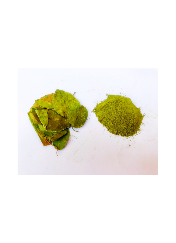 |
| Fenugreek | Major constituent 4-hydroxyleucine, a novel amino acid, increases glucose stimulated insulin release. It enhances glucose metabolism and restored normal creatinine kinase activity in the diabetic rats’ liver, heart, and skeletal muscles. | 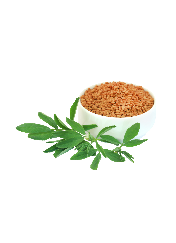 |
| Abrus precatorius | This plant’s leaves are combined with those of Gymnema sylvestre, Andrographis paniculata, and Syzygium cumini seeds. The combination is pounded into a powder, shade-dried, and then swallowed with cow’s milk. | 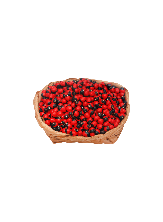 |
| Aloe vera | Gel and latex are the two main compounds that can be extracted from the plant. Aloe gum extracts successfully improve rats’ glucose tolerance in both normal and diabetic conditions. | 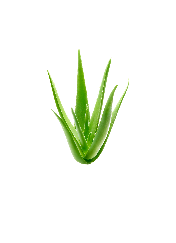 |
| Mango | The aqueous extract of Mango has hypoglycemic activity that could be due to an intestinal reduction of the absorption of glucose | 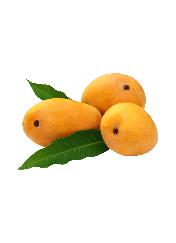 |
| Guduchi | In rats with alloxan diabetes, this plant’s extract significantly decreased the amount of lipids in the serum and tissues, as well as blood and urine glucose. | 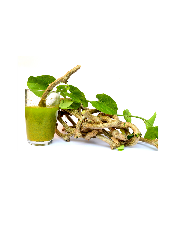 |
| Babhul | By functioning as a secretagouge to release insulin, the plant extract has anti-diabetic properties. | 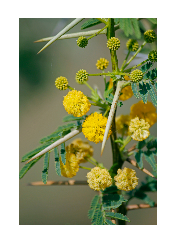 |
| Onion | The dried onion powder’s ether soluble and insoluble fractions both exhibit anti-hyperglycemic properties. | 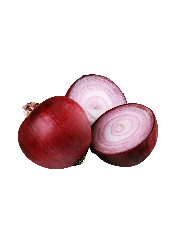 |
| Garlic | The chemical that gives it its strong smell is called allicin, and it has been proven that it has strong hypoglycemic action. |  |
| Holy Basil | The blood sugar level was significantly lowered by its leaf aqueous extract. | 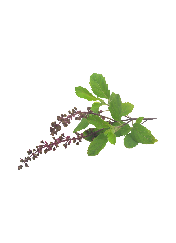 |
| Neem | Hydroalcoholic extracts of this plant has good antihyperglycemic activity, antibacterial, antimalarial, antifertility, hepatoprotective and antioxidant properties | 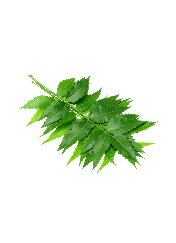 |
Table: Popular herbs and its functionality. 1
Safety and Efficacy
Certain products, including certain standardized herbal extracts, have been the subject of thorough clinical research, and Cochrane reviews and other systematic reviews have been conducted on clinical trials involving these herbal medications. Nevertheless, because product composition differs throughout producers, proof of safety and efficacy should be taken into account. According to a recent national poll 4, which listed the top 10 herbs used in the US, 18.9% of adults said they had used an herb to treat a medical condition in the previous year. Table 1 displays the efficacy evidence for each herb’s most popular uses.
|
Herb |
% Usage in the U.S. |
Common usage |
Scientific evidence for efficacy |
Safety |
|
Echinacea |
7 |
Upper respiratory tract |
Inconclusive5 |
Side effects similar to placebo |
|
Ginseng |
4.2 |
Physical and cognitive |
Inconclusive6 |
Limited data; hyperactivity and restlessness |
|
Ginkgo biloba |
3.7 |
Dementia |
Likely Effective 7 |
Side effects similar to placebo; case reports |
|
Garlic |
3.4 |
Hypercholesterolemia |
Likely Effective |
Mild gastrointestinal side effects and garlic odor; |
|
St. John’s |
2.1 |
Depression |
Likely Effective for mild– |
Numerous reports of drug interactions |
|
Peppermint |
2.1 |
Upset stomach / irritable bowel |
Inconclusive |
Limited data, but side effects appear |
|
Ginger |
1.8 |
Nausea |
Inconclusive |
No known side effects |
|
Soy |
1.7 |
Menopausal symptoms |
Not effective |
Concerns regarding long-term estrogenic |
|
Chamomile |
1.5 |
Hypercholesterolemia |
Effective |
Rare allergic reactions |
|
Kava kava |
1.2 |
Anxiety |
Likely Effective |
Case reports of severe hepatotoxicity |
Herbal Formulations for Diabetes
Many multi herbal formulations, including Vati, Churna, Arkh, Quath, and others, are currently available on the Indian market and are used to treat diabetes in various ways. These mixtures could include powdered plant parts or aqueous extracts from different plant parts that are used to treat diabetes. These are known as Polyherbal formulations since the mixture contains anywhere from three to twenty-five herbs. Guires FRL CDMO is a pioneer in formulation of herbal products along with its efficacy assessments through robust clinical trials in one-roof.
References:
- Ozkum D. Akı O, Toklu HZ. Herbal medicine use among diabetes mellitus patients in Northern Cyprus. Journal of Medicinal Plants Research;2013(7):1652–1664
- Dewanjee, S., Das, S., Das, A. K., Bhattacharjee, N., Dihingia, A., Dua, T. K., … & Manna, P. (2018). Molecular mechanism of diabetic neuropathy and its pharmacotherapeutic targets. European journal of pharmacology, 833, 472-523.
- Chandraprakash, D., & Swarnali, D. (2013). Anti-diabetic herbal drugs and polyherbal formulation used for diabetes: A review. Journal of Phytopharmacology, 2(3), 44-51.
- Barnes PM, Powell-Griner E, McFann K, Nahin RL. Complementary and alternative medicine use among adults: United States, 2002. Adv Data. 2004; 343:1–19.
- Linde K, Barrett B, Wolkart K, Bauer R, Melchart D. Echinacea for preventing and treating the common cold. Cochrane Database Syst Rev.2006(1):CD000530
- Vogler BK, Pittler MH, Ernst E. The efficacy of ginseng. A systematic review of randomised clinical trials. Eur J Clin Pharmacol. 1999;55:567–75
- Oken BS, Storzbach DM, Kaye JA. The efficacy of Ginkgo biloba on cognitive function in Alzheimer disease. Arch Neurol. 1998;55:1409–15.





